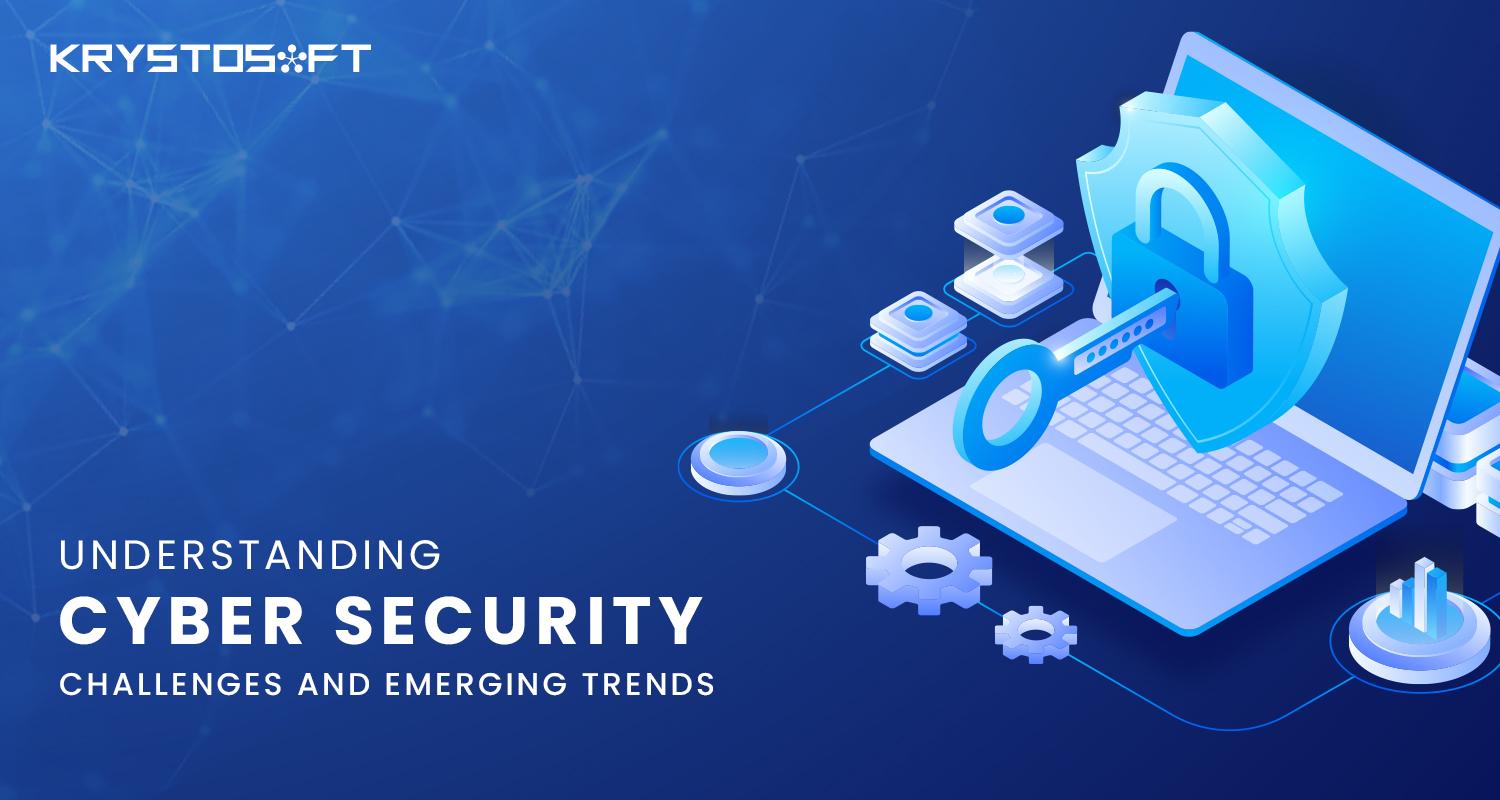If you own a computer, an Android device, a Smart Watch, or any other Smart/ IoT device, then you’re on the brunt of a cyber security attack. Don’t think so? According to statistics, between 2022 and 2023, 66% of the companies worldwide were victims of cyber attacks.
So, it’s important that you start educating yourself about how to prevent yourself from a cyber attack. In today’s blog, we’ll understand the emerging trends and challenges faced by organizations and individuals in maintaining cyber security. So stay tuned and keep reading. First, let’s understand what cyber security actually is.
What is Cyber Security?
Cyber security includes all actions that protect networks, computer systems, and related devices from unauthorized access, data breaches, and threats. The process involves placing security measures in place for networks, applications, databases, as well as physical equipment. Another aspect of cyber security is to provide employees with awareness about cyber threats through training sessions and awareness programs. Now, let’s discuss some of the emerging cyber security trends that we’ll witness in 2024.
Emerging Cyber Security Trends
With 2024 on the horizon, these are the emerging trends in security that we can expect to see against cyber crimes.
1. The increasing role of AI in cyber security
AI has become a major part of our lives, whether it’s writing content, predicting outcomes, or suggesting stock options for investors. The same is the case with AI’s increasing influence in the world of cyber security.
AI simplifies cyber threat response by triggering an auto-response. As a result, you no longer need cyber security professionals to formulate a response to the threat.
But that’s not all. Cyber security also helps identify potential threats by evaluating existing trends and identifying unusual user patterns. As a result, AI renders a threat useless
before it becomes a problem.
Moreover, AI also helps organizations predict vulnerabilities and shortcomings that can pose future threats. AI does this with the help of machine learning, which uses current trends and large volumes of data to analyze and predict vulnerabilities.
So, the increasing trend of the use of AI to promote cyber security is another trend that we can witness in 2023.
2. Automation of cyber security systems
The 21st century’s hectic work schedule and rampant workload call for some ease for cyber security professionals. As a result, automating cyber security measures through the use of software is one of the top trending topics in cyber security.
What makes it more important is the fact that large applications are more complex to safeguard. Thus, automating the process of integrating APIs and security protocols is a great way to continuously address the changing security needs of organizations.
3. Multi-factor authentication
Multi-factor authentication involves setting two layers of security on a device to strengthen the security, and further identify the user’s identity. Thus, hackers now need to have access to multiple sources of information to attack devices.
For example, consider your Google account. Now, you can enable two-factor authentication on it. Now, when you enter a password to sign into a device, Google will also send a code on your phone, to further verify that it’s you who’s signing in. The code will be sent to your registered device, and you’ll be requested to enter it in your other device.
Thus, Google is able to verify that it’s you who’s signing in.
Challenges in Improving Cyber Security
1. The use of AI to facilitate social engineering
Social engineering is the art of influencing current trends and occurrences to mold future social behavior accordingly. In the case of cybersecurity, this involves impersonating oneself as an entity or an individual to gain access to unauthorized information and confidential/personal data.
For example, you’re sitting in your office, getting done with some important work. Suddenly, you receive a call from a person who claims that he/she is a representative of the national bank.
The person easily lures you into providing personal information, claiming that they need it to prevent a security breach. The entire exchange lasted for two minutes, but throughout the call, the person knew all your personal details.
Later, when you called the bank, you realized that it was all an elaborate fraud. So, how were they able to pull it off so well, despite not being bank representatives? The answer is AI. With the help of AI, the scammers were able to gain all your information, which helped them assert their authority over you. Thus, they were able to extract information from you easily.
As a result, AI is a great tool, particularly for social engineering related cyber crimes.
2. An increase in ransomware attacks
You’ve probably heard of kidnapping, right? It’s when a person gets abducted, and is only released once the kidnappers are paid the desired sum of money or their required demands are fulfilled.
The same is the case with ransomware, where hackers will block access to your computer until you pay a required sum of money. As of the latest findings of 2023, 72.7% of businesses are affected worldwide by ransomware attacks.
Hence, we can see that ransomware is a major threat that needs to be addressed in the upcoming year.
3. Vulnerability of IoT devices
With the emerging use of IoT devices, we are likely to see them become a major source of cyberattacks. As of 2030, the predicted number of IoT devices is projected to reach 29.42 billion. Currently, this number stands at 15.14 billion.
So, we can see that the number of IoT devices is expected to double in the next seven years. Consequently, this also means that the percentage of vulnerability of IoT devices to cyberattacks will also increase. As a result, hackers will have access to a more robust set of data from interconnected devices, which can result in monetary cybercrimes as well.
For example, most food apps that we use today are integrated with our payment information. Thus, if our devices get compromised, hackers can gain access to our financial information, helping them access the balances in our bank accounts.
So, it’s a great challenge for cyber security experts to set in place measures to enhance the security of IoT devices.
The Takeaways
- Cyber security is a major concern in the 21st century. With the world burying the hatchet for 2023, and with 2024 on the horizon, we may see some improvised approaches to cyber attacks.
- 2024 sees an emerging trend toward cyber security automation and a growing demand for IoT devices. This is coupled with the growing influence of AI in cyber security, which has led to an improved ability to identify potential cyber threats and deal with them beforehand.
- But, the emerging trends also bring in more challenges, such as the vulnerability of IoT devices, an increase in ransomware attacks, and the negative use of AI to facilitate social engineering.
- The importance and challenges of cyber security pose a major feat for cyber security specialists to upskill their craft to meet the changing requirements of the present.
Hence, we can see that investing in, and learning about the latest happenings in the world of cyber security is important for success.





